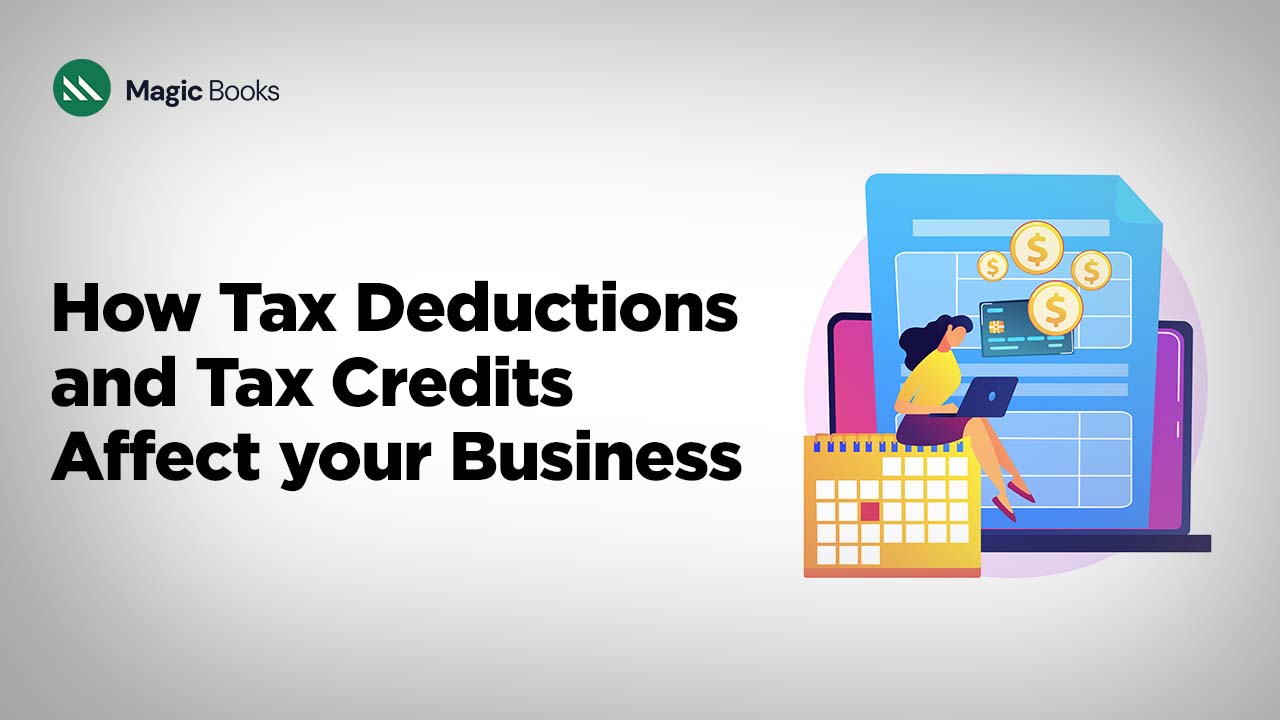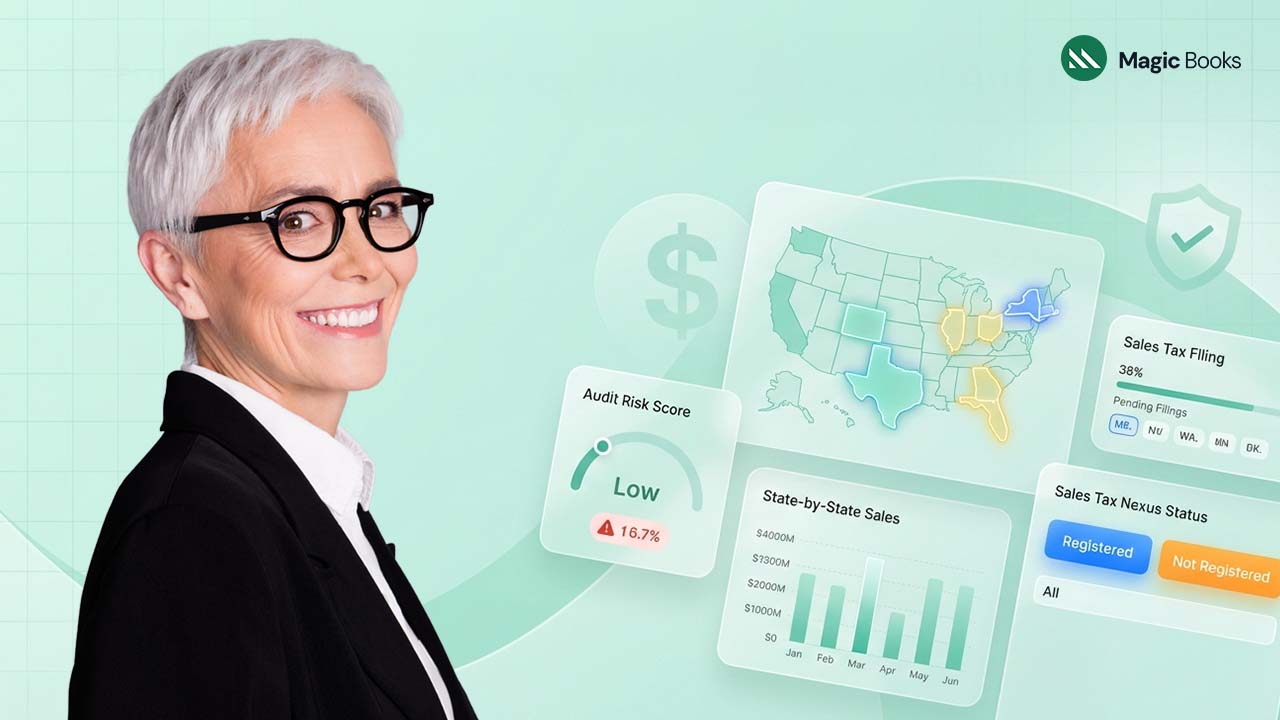Small business proprietors face difficulties when dealing with tax matters since they need to distinguish between tax deductions and tax credits. The two methods provide valuable tax reduction but function as separate strategies with different advantages. This guide will describe tax credits and tax deductions while showing examples to help small businesses understand which strategy delivers greater benefits. You will understand the tax-saving strategy application after reading this complete article.
The Basics of Tax Deductions
The government permits business owners to subtract approved expenditures from their total revenue before determining their tax burden. The process works by reducing your taxable income followed by a reduced tax amount you must pay. Small business owners benefit greatly from tax deductions because nearly all business expenses qualify for reduction of taxable income. Taxpayers who utilize office supply expenses and travel costs or partial home valuation deductions for work areas reduce their taxable income considerably.
Tax deductions operate under one key concept that lets business operators document their company expenses against their business revenue. After reporting your business earnings to the authorities you can subtract qualified expenses from your total earning amount to lower the tax base. The application of deductible expenses to your business revenue results in taxable income of $80,000 from your $100,000 yearly earnings. Your taxable income decreases when you have fewer expenses since you spend less money. Business owners must maintain complete documentation of their deductible costs since precise records serve as proof if tax authorities audit their financial affairs.
The two types of tax deductions comprise government-provided standard deductions and detail-oriented itemized deductions requiring documentation of eligible costs. Business owners who itemize their deductions may claim more deductions than through standard deductions provided that their business expenses surpass the acceptable limit. The choice between using a standard deduction or itemization depends on how the method benefits you at a specific time because your business conditions may change over the years.
Delving into Tax Credits
Tax credits function distinctively apart from tax deductions in how they operate during accounting. Tax credits serve as tax reduction tools since they decrease the amount of tax debt by precise dollar amounts. Any tax credit amount of $1,000 reduces your total tax liability exactly by that amount no matter what your income is. Tax credits serve as strong incentives for small business owners since they have the added benefit of refundability through which excess credits surpass tax liabilities result in receiving the unclaimed sums back.
Tax credits come in different forms which include credits both for hiring new types of staff members and for renewable energy investments or research and development projects. Businesses receiving research and development tax credits can obtain financial benefits because these credits offset costs related to innovative research. The tax bill of any business can decrease with environmental credits from the IRS when the business implements either sustainable operations or energy-efficient equipment.
Tax credits deliver specific advantages because they implement direct money reductions from your taxes directly. Reducing taxable income through deductions does not guarantee identical amounts of tax savings since marginal tax rates apply. The reduction of your tax liability occurs clearly through credits when your current tax rate happens to be low. A business needs to recognize which tax credits impact it because possessing this information leads to significant savings throughout the years.
The fundamental operational aspects of these deductions and credits
Tax deductions and tax credits serve to lower your tax burden but work through opposed procedural methods. Judicial tax deductions lower the taxable income before tax assessment. Their tax benefits directly relate to the tax bracket where you fall. Your tax bracket stands at 22% thus any $1,000 deduction creates tax savings of $220. Getting a tax credit worth $1,000 allows you to eliminate $1,000 from your taxable amount. The superiority of tax credits over deductions can be understood by examining their values with each other.
Taxable income level directly influences the magnitude of tax differences experienced by taxpayers. The clear structure of tax credits proves extremely beneficial to small businesses so that every dollar matters. The number of deductions eligible for tax benefits exceeds the breadth of tax credits although taxpayers can claim deductions on various expenses. Tax credits exist for specific activities or investments that the government encourages through special arrangements but daily business expenses like staff payment and utility bills fall under deductible categories.
The value of tax deductions depends directly on the tax rate bracket you occupy at present. Tax deductions prove to be powerful tax relief mechanisms in profitable business years when you are positioned in higher tax brackets. A tax credit proves more useful for businesses because it reduces actual taxable income in low-profit years. Small business owners typically base their decisions between tax deductions and tax credits according to their financial needs and expense characteristics together with their future business targets.
Practical Examples: How Deductions and Credits Affect Your Tax Bill
The following examples demonstrate how tax deductions work versus tax credits work in practice. As the head of your marketing business which generated $150,000 in earnings for the last year, you must now decide between tax deductions and credits for your company. Operation expenses totaled $40,000 within the same period and you can deduct all that amount. Your annual tax savings reach $8,800 because your taxable income falls to $110,000 when you claim these deductions as someone who belongs to the 22% tax bracket. A tax credit of $3,000 exists for your business if it hires employees from target demographic groups. Your tax bill decreases by $3,000 dollars as this credit applies directly without considering your tax bracket.
A small manufacturing business that uses renewable energy tax credits for its energy-efficient equipment investment earns tax savings. The $5,000 tax credit available from the equipment purchase collides with the 24% tax bracket resulting in only $1,200 savings from the $5,000 tax deduction. Proof of the higher effectiveness of tax credits over tax deductions becomes evident when tax credits appear as an option for tax relief.
Understanding both definitions and practical business effects of tax-saving methods becomes crucial because of these specific examples. Small business owners must analyze short-term together with long-term financial results of possible options to select the best business strategy. Engaging professional tax help can assist you in crossing technical financial hurdles while revealing new options above your present knowledge level.
Strategic Considerations for Small Business Owners
Tax planning serves multiple purposes for small business owners beyond compliance because it constitutes an essential part of their financial strategy. The relationship between tax deductions and credits will guide you to use your resources better whether you are establishing your business or expanding it. Keeping precise documentation of every business spending constitutes an essential tax deduction requirement. Staying educated about accessible tax credits along with their qualification guidelines will enable you to plan ahead for business investments which reward you in future years.
Most tax credits represent activities where you reduce your taxes while simultaneously advancing your business growth and sustainability. Significant tax incentives exist for businesses that fund employee training initiatives along with research and development or purchase green technologies. Professional investments funded by tax credits generate operational innovations that boost your business performance and market advantages and simultaneously minimize your tax burden.
Creating a balance between deductions and credits necessitates strategic planning for the future. Before the upcoming tax year begin you should analyze your projected income and determine essential expenses for business development. The analysis of your current finances and future demand should be done by collaborating with a tax expert. A well-structured business plan that leverages deductions together with credits allows you to extract maximum value from tax benefits available to your organization.
Record-Keeping and Documentation:
A successful tax strategy requires precise documentation for its foundation. Irrational record management will complicate your ability to request tax deductions leading to expensive losses in potential savings. All business expenses both minor and major need proper documentation so that they can be verified during tax evaluations. This practice gives you benefits in tax time and simultaneously offers an understanding of your business performance and financial situation.
The documentation process for deductions requires that you maintain receipts together with invoices and storage of bank statements. Such documents demonstrate that the costs happened throughout business operations. Being fully prepared for audits becomes easier when you maintain easy access to your records so you can avoid any associated penalties. Businesses must show that each expense passes both ordinary and necessary requirements since many tax deductions mandate this standard.
For tax credit documentation stands as crucial as in all other cases. Businesses need to meet exact eligibility requirements for multiple credit programs and they must show documentation to verify their eligibility status. You must demonstrate a thorough description of project work along with expenses and achievement outcomes when submitting an application for a research and development tax credit. Some tax credit applications necessitate evaluations from credible external parties or certifications.
Getting dependable accounting software or choosing qualified bookkeepers represents a smart financial decision. Bring in these resources to organize and detect all your eligible credits and expenses in a year-long manner. A high level of attention to detail throughout the year will produce significant tax reductions while providing better business financial insights.
Understanding Eligibility and Compliance
Changes in tax laws exist as complicated systems while current tax deductions and credits may evolve into different categories from one day to the next. Small business owners must actively follow alterations in tax laws. Tax regulations get modified by the Internal Revenue Service (IRS) together with other government bodies which establish new tax breaks or modify existing rules according to current economic priorities. The implementation of business-promoting or environmental sustainability initiatives results in new availability of tax credits that did not exist prior to these initiatives.
Tax compliance stands as an essential factor for successful management of tax credits combined with deductions. You need more than identifying available tax opportunities because your claims must meet every requirement of present tax regulations. Tax non-compliance leads to three types of penalties including interest charges alongside the possibility of legal action. Seek professional tax advisory from someone who stays updated with regulations because this will help you manage tax changes successfully.
The rules for qualified tax credits and deductions show different levels of administrative complexity because they have different eligibility requirements. Particular credits and deductions need specific earnings levels from applicants or demand evidence of approved investments or business approaches. Tax credits intended for veteran or disadvantaged background hires require businesses to fulfill distinct reporting responsibilities as part of meeting government standards. Knowing about the complex tax rules regarding eligibility will prevent you from making mistakes in your preparation while protecting your tax authority compliance status.
Common Misconceptions About Tax Credits and Deductions
Several wrong beliefs exist about tax credits and deductions which misguide small business owners. Many taxpayers believe that any spending automatically transforms into deductible costs or accredited expenses. According to IRS regulations both deductible expenses and credit-eligible expenditures require specific qualifications before approval. Even when engaging in business travel an expense will not qualify for deduction unless it satisfies particular IRS requirements.
The idea that tax credits provide better benefits than tax deductions is incorrect in all situations. Every business does not receive equal benefits through tax credits since they directly reduce tax bills dollar for dollar. Tax credits enforce restrictions and gradual reductions in their value when your personal income reaches specified levels. When a tax credit reaches zero liability only can it be used to pay taxes because these credits are non-refundable entities.
All small business owners need to exercise caution when they believe increased deductions or credits lead automatically to larger tax savings. You must examine both your financial position along with your expense timing and nature to make appropriate decisions. Deducting an expensive piece of equipment gives tax savings benefits at first but its long-term business operational improvements may provide greater benefits to your company. The assessment of quantitative along with qualitative attributes regarding tax benefits needs to be achieved through an integrated approach.
The solution for clearing misunderstandings rests in receiving proper education. Earning reliable tax information through workshops and consultancy with professionals along with regular research of trustworthy sources enables you to make well-informed tax decisions. To maximize your tax strategy you need to know in detail the particular definitions along with boundaries that apply to each deduction and credit.
Conclusion:
Understanding the differences along with personal applicability between tax credits and tax deductions leads to maximizing their value. A comprehensive tax strategy will allow you to maximize both business expense tracking and strategic tax credit qualification leading to substantial financial benefits. Knowledge along with strategic planning will present you with the confidence to successfully navigate tax season with clarity.
Your business operations will strengthen with these insights which let you minimize your tax payments while ensuring ongoing development. A business can maintain success even through economic tough times by using predictive planning and knowledge-based decision making and proactive tax management strategies. When your company uses strategic methods to handle tax season it transforms into a period where you can allocate resources to building your business for future achievements.
The distinction between tax credits and tax deductions remains essential for any person running a business whether established or just taking their first steps. Financial levers exist in tax credits which have a substantial monetary impact on business cash flow and enable expansion possibilities and innovation opportunities. Implementing these core principles correctly qualifies among the best decisions available for managing your business as an owner.
The key requirement for small business owners in evolving tax regulations is their constant preparedness and knowledge along with flexibility. The correct strategies bring tax season challenges into tangible business advantages that support both the growth and sustainable development of your operations. Using tax deductions in combination with tax credits will let you redirect every dollar saved from taxes directly into business growth and improvement.



